�
Exploratory Analysis of
Spatial and Temporal Data
Natalia Andrienko · Gennady Andrienko
Exploratory Analysis
of Spatial and
Temporal Data
A Systematic Approach
With 245 Figures and 34 Tables
123
�
Authors
Natalia Andrienko
Gennady Andrienko
Fraunhofer Institute AIS
Schloss Birlinghoven
53754 Sankt Augustin, Germany
gennady.andrienko@ais.fraunhofer.de
http://www.ais.fraunhofer.de/and
Library of Congress Control Number: 2005936053
ACM Computing Classification (1998): J.2, H.3
ISBN-10 3-540-25994-5 Springer Berlin Heidelberg New York
ISBN-13 978-3-540-25994-7 Springer Berlin Heidelberg New York
This work is subject to copyright. All rights are reserved, whether the whole or part of the material is
concerned, specifically the rights of translation, reprinting, reuse of illustrations, recitation, broadcasting,
reproduction on microfilm or in any other way, and storage in data banks. Duplication of this publication
or parts thereof is permitted only under the provisions of the German Copyright Law of September 9,
1965, in its current version, and permission for use must always be obtained from Springer. Violations
are liable for prosecution under the German Copyright Law.
Springer is a part of Springer Science+Business Media
springeronline.com
© Springer-Verlag Berlin Heidelberg 2006
Printed in Germany
The use of general descriptive names, registered names, trademarks, etc. in this publication does not
imply, even in the absence of a specific statement, that such names are exempt from the relevant pro-
tective laws and regulations and therefore free for general use.
Typeset by the authors
Production: LE-TEX Jelonek, Schmidt & Vöckler GbR, Leipzig
Cover design: KünkelLopka Werbeagentur, Heidelberg
Printed on acid-free paper
45/3142/YL - 5 4 3 2 1 0
�
Preface
This book is based upon the extensive practical experience of the authors
in designing and developing software tools for visualisation of spatially
referenced data and applying them in various problem domains. These
tools include methods for cartographic visualisation; non-spatial graphs;
devices for querying, search, and classification; and computer-enhanced
visual techniques. A common feature of all the tools is their high user in-
teractivity, which is essential for exploratory data analysis. The tools can
be used conveniently in various combinations; their cooperative function-
ing is enabled by manifold coordination mechanisms.
Typically, our ideas for new tools or extensions of existing ones have
arisen from contemplating particular datasets from various domains. Un-
derstanding the properties of the data and the relationships between the
components of the data triggered a vision of the appropriate ways of visu-
alising and exploring the data. This resulted in many original techniques,
which were, however, designed and implemented so as to be applicable not
only to the particular dataset that had incited their development but also to
other datasets with similar characteristics. For this purpose, we strove to
think about the given data in terms of the generic characteristics of some
broad class that the data belonged to rather than stick to their specifics.
From many practical cases of moving from data to visualisation, we
gained a certain understanding of what characteristics of data are relevant
for choosing proper visualisation techniques. We learned also that an es-
sential stage on the way from data to the selection or design of proper ex-
ploratory tools is to envision the questions an analyst might seek to answer
in exploring this kind of data, or, in other words, the data analysis tasks.
Knowing the questions (or, rather, types of questions), one may look at
familiar techniques from the perspective of whether they could help one to
find answers to those questions. It may happen in some cases that there is a
subset of existing tools that covers all potential question types. It may also
happen that for some tasks there are no appropriate tools. In that case, the
nature of the tasks gives a clue as to what kind of tool would be helpful.
This is an important initial step in designing a new tool.
Having passed along the way from data through tasks to tools many
times, we found it appropriate to share the knowledge that we gained from
�
VI Preface
this process with other people. We would like to describe what compo-
nents may exist in spatially referenced data, how these components may
relate to each other, and what effect various properties of these compo-
nents and relationships between them may have on tool selection. We
would also like to show how to translate the characteristics of data and
structures into potential analysis tasks, and enumerate the widely accepted
principles and our own heuristics that usually help us in proceeding from
the tasks to the appropriate approaches to accomplishing them, and to the
tools that could support this. In other words, we propose a methodological
framework for the design, selection, and application of visualisation tech-
niques and tools for exploratory analysis of spatially referenced data. Par-
ticular attention is paid to spatio-temporal data, i.e. data having both spa-
tial and temporal components.
We expect this book to be useful to several groups of readers. People
practising analysis of spatially referenced data should be interested in be-
coming familiar with the proposed illustrated catalogue of the state-of-the-
art exploratory tools. The framework for selecting appropriate analysis
tools might also be useful to them. Students (undergraduate and postgradu-
ate) in various geography-related disciplines could gain valuable informa-
tion about the possible types of spatial data, their components, and the re-
lationships between them, as well as the impact of the characteristics of the
data on the selection of appropriate visualisation methods. Students could
also learn about various methods of data exploration using visual, highly
interactive tools, and acknowledge the value of a conscious, systematic
approach to exploratory data analysis. The book may be interesting to re-
searchers in computer cartography, especially those imbued with the ideas
of cartographic visualisation, in particular, the ideas widely disseminated
by the special Commission on Visualisation of the International Carto-
graphic Association. Our tools are in full accord with these ideas, and our
data- and task-analytic approach to tool design offers a way of putting
these ideas into practice. It can also be expected that the book will be in-
teresting to researchers and practitioners dealing with any kind of visuali-
sation, not necessarily the visualisation of spatial data. Many of the ideas
and approaches presented are not restricted to only spatially referenced
data, but have a more general applicability.
The topic of the book is much more general than the consideration of
any particular software: we investigate the relations between the character-
istics of data, exploratory tasks (questions), and data exploration tech-
niques. We do this first on a theoretical level and then using practical ex-
amples. In the examples, we may use particular implementations of the
techniques, either our own implementations or freely available demonstra-
tors. However, the main purpose is not to instruct readers in how to use
�
Preface VII
this or that particular tool but to allow them to better understand the ideas
of exploratory data analysis.
The book is intended for a broad reader community and does not require
a solid background in mathematics, statistics, geography, or informatics,
but only a general familiarity with these subjects. However, we hope that
the book will be interesting and useful also to those who do have a solid
background in any or all of these disciplines.
Acknowledgements
This book is a result of a theoretical generalisation of our research over
more than 15 years. During this period, many people helped us to establish
ourselves and grow as scientists. We would like to express our gratitude to
our scientific “parents” Nadezhda Chemeris, Yuri Pechersky, and Sergey
Soloview, without whom our research careers would not have started. We
are also grateful to our colleagues and partners who significantly influ-
enced and encouraged our work from its early stages, namely Leonid Mi-
kulich, Alexander Komarov, Valeri Gitis, Maria Palenova, and Hans Voss.
Since 1997 we have been working at GMD, the German National Re-
search Centre for Information Technology, which was later transformed
into the AIS (Autonomous Intelligent Systems) Fraunhofer Institute. Insti-
tute directors Thomas Christaller and Stefan Wrobel and department heads
Hans Voss and Michael May always supported and approved our work.
All our colleagues were always cooperative and helpful. We are especially
grateful to Dietrich Wettschereck, Alexandr Savinov, Peter Gatalsky, Ivan
Denisovich, Mark Ostrovsky, Simon Scheider, Vera Hernandez, Andrey
Martynkin, and Willi Kloesgen for fruitful discussions and cooperation.
Our research was developed in the framework of numerous international
projects. We acknowledge funding from the European Commission and
the friendly support of all our partners. We owe much to Robert Peckham,
Jackie Carter, Jim Petch, Oleg Chertov, Andreas Schuck, Risto Paivinen,
Frits Mohren, Mauro Salvemini, and Matteo Villa. Our work was also
greatly inspired by a fruitful (although informal) cooperation with Piotr
Jankowski and Alexander Lotov.
Our participation in the ICA commissions on Visualisation and Virtual
Environments, Maps and the Internet, and Theoretical Cartography had a
strong influence on the formation and refinement of our ideas. Among all
the members of these commissions, we are especially grateful to Alan
MacEachren, Menno-Jan Kraak, Sara Fabrikant, Jason Dykes, David Fair-
bain, Terry Slocum, Mark Gahegan, Jürgen Döllner, Monica Wachowicz,
�
VIII Preface
Corne van Elzakker, Michael Peterson, Georg Gartner, Alexander Volod-
tschenko, and Hans Schlichtmann.
Discussions with Ben Shneiderman, Antony Unwin, Robert Haining,
Werner Kuhn, Jonathan Roberts, and Alfred Inselberg were a rich source
of inspiration and provided apt occasions to verify our ideas. Special
thanks are due to the scientists whose books were formative for our re-
search, namely John Tukey, Jacques Bertin, George Klir, and Rudolf Arn-
heim.
The authors gratefully acknowledge the encouraging comments of the
reviewers, the painstaking work of the copyeditor, and the friendly coop-
eration of Ralf Gerstner and other people of Springer-Verlag.
We thank our family for the patience during the time that we used for
discussing and writing the book in the evenings, weekends, and during va-
cations.
Almost all of the illustrations in the book were produced using the
CommonGIS system and some other research prototypes developed in our
institute. Online demonstrators of these systems are available on our Web
site http://www.ais.fraunhofer.de/and and on the web site of our institute
department http://www.ais.fraunhofer.de/SPADE. People interested in us-
should
ing
of CommonGIS,
http://www.CommonGIS.com.
software
site
the
visit
the
The datasets used in the book were provided by our partners in various
projects.
1. Portuguese census. The data set was provided by CNIG (Portuguese
National Centre for Geographic Information) within the EU-funded pro-
ject CommonGIS (Esprit project 28983). The data were prepared by
Joana Abreu, Fatima Bernardo, and Joana Hipolito.
2. Forests in Europe. The dataset was created within the project “Com-
bining Geographically Referenced Earth Observation Data and Forest
Statistics for Deriving a Forest Map for Europe” (15237-1999-08 F1ED
ISP FI). The data were provided to us by EFI (the European Forest Insti-
tute within the project EFIS (European Forest Information System), con-
tract number: 17186-2000-12 F1ED ISP FI.
3. Earthquakes in Turkey. The dataset was provided within the project
SPIN! (Spatial Mining for Data of Public Interest) (IST Programme,
project IST-1999-10536) by Valery Gitis and his colleagues.
4. Migration of white storks. The data were provided by the German Re-
search Centre for Ornithology of the Max Planck Society within a Ger-
man school project called “Naturdetektive”. The data were prepared by
Peter Gatalsky.
�
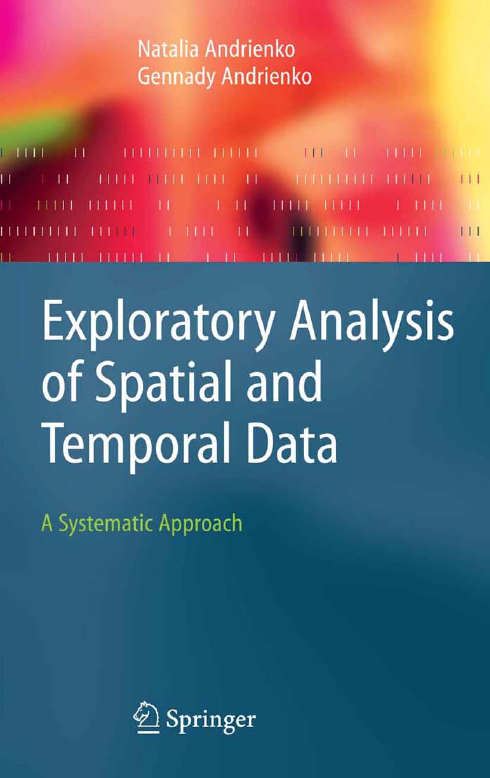
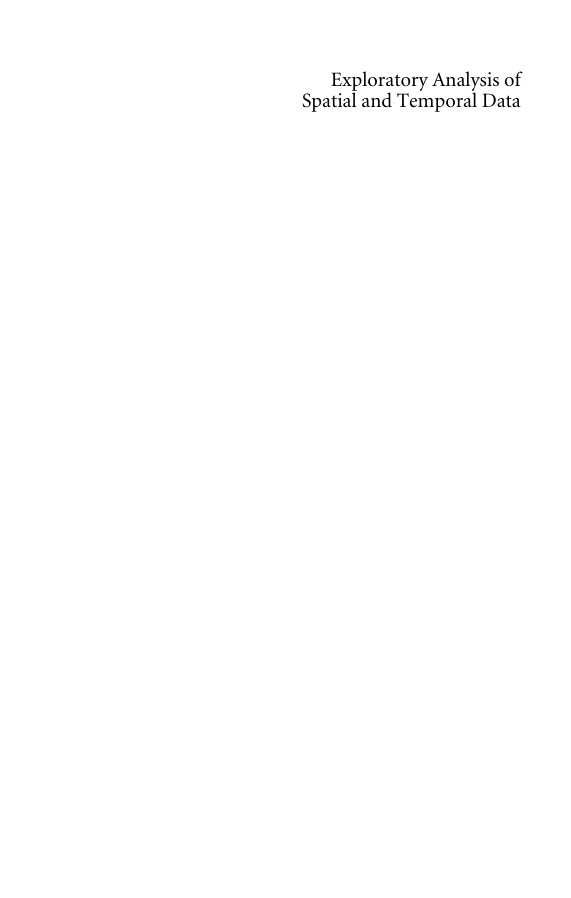
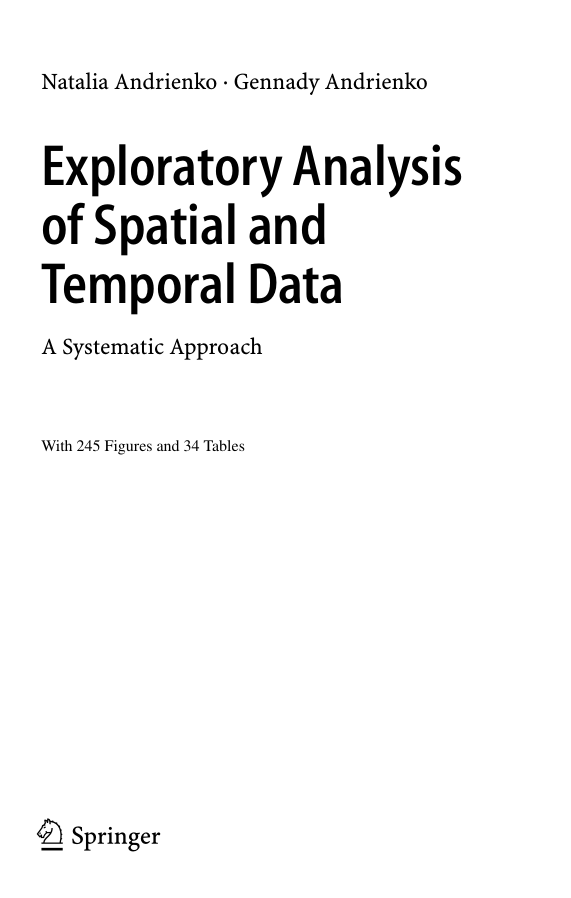

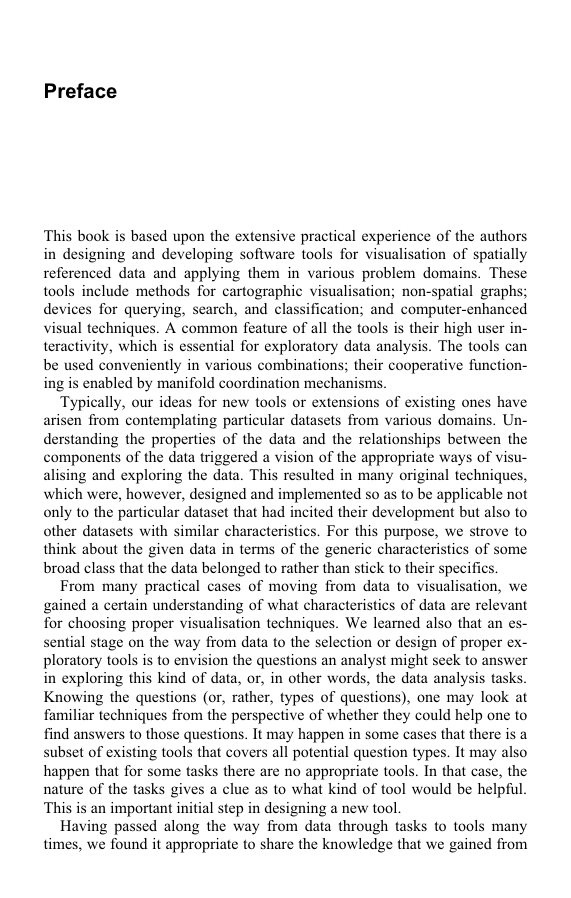
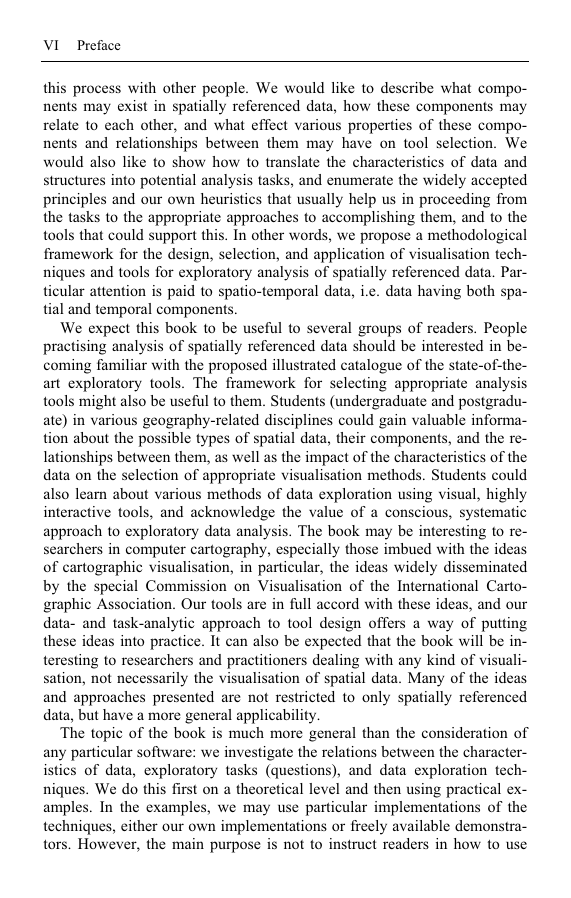
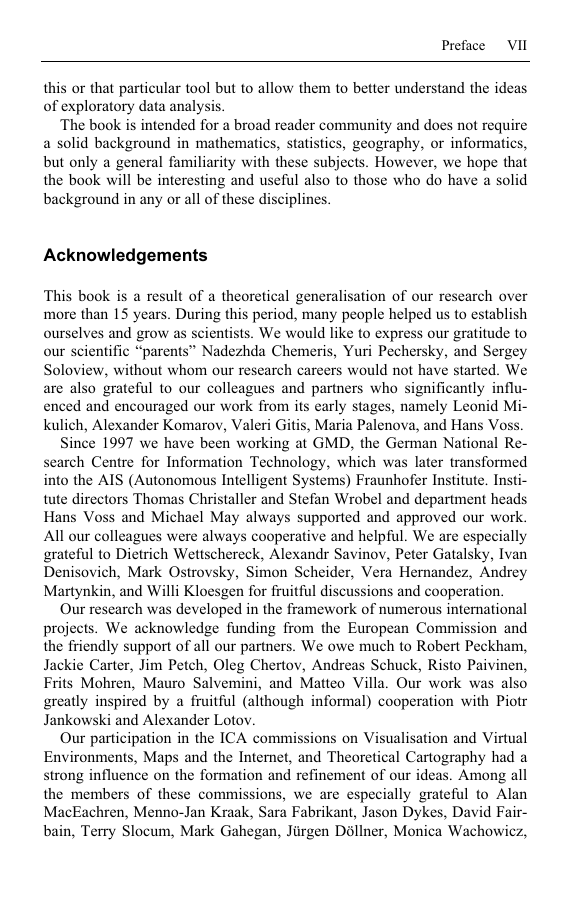
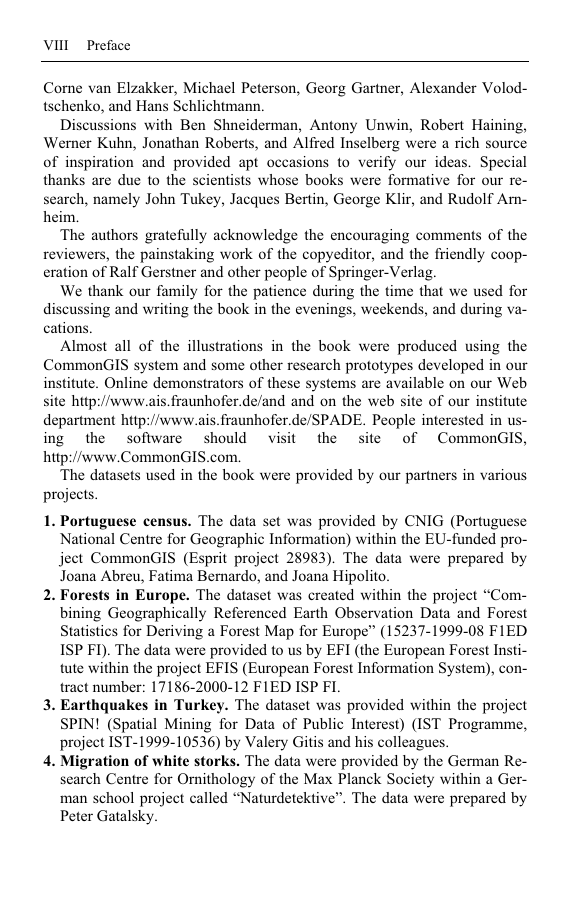








 2023年江西萍乡中考道德与法治真题及答案.doc
2023年江西萍乡中考道德与法治真题及答案.doc 2012年重庆南川中考生物真题及答案.doc
2012年重庆南川中考生物真题及答案.doc 2013年江西师范大学地理学综合及文艺理论基础考研真题.doc
2013年江西师范大学地理学综合及文艺理论基础考研真题.doc 2020年四川甘孜小升初语文真题及答案I卷.doc
2020年四川甘孜小升初语文真题及答案I卷.doc 2020年注册岩土工程师专业基础考试真题及答案.doc
2020年注册岩土工程师专业基础考试真题及答案.doc 2023-2024学年福建省厦门市九年级上学期数学月考试题及答案.doc
2023-2024学年福建省厦门市九年级上学期数学月考试题及答案.doc 2021-2022学年辽宁省沈阳市大东区九年级上学期语文期末试题及答案.doc
2021-2022学年辽宁省沈阳市大东区九年级上学期语文期末试题及答案.doc 2022-2023学年北京东城区初三第一学期物理期末试卷及答案.doc
2022-2023学年北京东城区初三第一学期物理期末试卷及答案.doc 2018上半年江西教师资格初中地理学科知识与教学能力真题及答案.doc
2018上半年江西教师资格初中地理学科知识与教学能力真题及答案.doc 2012年河北国家公务员申论考试真题及答案-省级.doc
2012年河北国家公务员申论考试真题及答案-省级.doc 2020-2021学年江苏省扬州市江都区邵樊片九年级上学期数学第一次质量检测试题及答案.doc
2020-2021学年江苏省扬州市江都区邵樊片九年级上学期数学第一次质量检测试题及答案.doc 2022下半年黑龙江教师资格证中学综合素质真题及答案.doc
2022下半年黑龙江教师资格证中学综合素质真题及答案.doc